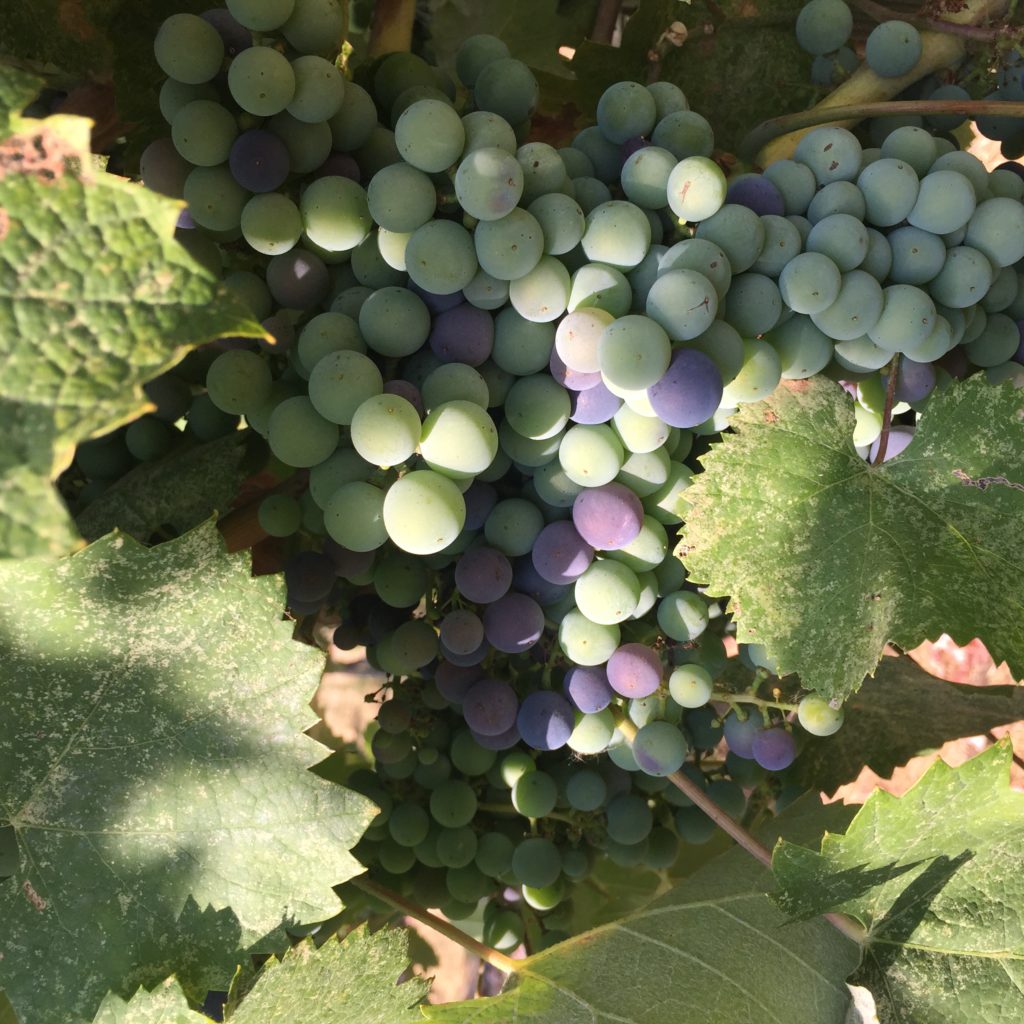Wow how time flies in the vineyards. I had been meaning to post an update much sooner than this, but things have been busy between the day job and work in the vineyards. Life in the vines can get pretty crazy in summer.
Irrigation
Water is an essential component for vine growth. While there is certainly something to be said for dry farming grapevines, the intense heat of the Sierra Foothills can be rough on the vines and ours have all been raised with irrigation. I’ve been reading up on converting vineyards over to dry farming, but we’re not quite ready for that, and even so, you need to ween the vines off of the irrigation over a couple of years. This year is not the year to start, so last month was spent getting the hoses, drip emitters, valves, and timers all in order.
I’ve learned more than I ever wanted to know about irrigation and valves (locating valves, repairing stuck valves, replacing broken valves and solenoids, tracing water sources, programming timers, replacing hoses and emitters). I now know a heck of a lot more about how our irrigation is setup, and there is plenty of room for improvement in efficiency in the off season.
We got a late start on repairs, even though we knew it was coming, and because of that we were a couple of weeks behind in starting the irrigation program. Fortunately, vines are extremely hearty plants, and while stressed a bit, they coped well enough.
Vine vigor, suckering, and shoot thinning
Between the fertile soil of the Sierra Foothills, the long sunny days and the moderate temperatures this spring (optimum temps for photosynthesis and plant growth are 68-86 degrees) our grapevines are quite prodigious growth machines. Typically we require two passes of suckering and shoot thinning, and depending upon the timing of those, a third pass may even be in order. Suckering is when you remove the plant shoots that tend to come from the root stock rather than the wine grape vine grafted to that root stock. Shoot thinning is where you remove the excess shoots that want to sprout every which way from the trunk and spurs of the vine. If you catch them early enough you can easily remove them with your hands, but if you wait too long, they become much tougher and you need to use clippers. If you wait much longer, it’s even more challenging to sort out which shoots you intend to keep and which ones need to be removed as they can all become tangled in amongst each other.
Our Petite Sirah is particularly prolific and can have lateral shoot (a shoot that grows outwards from one of this year’s shoots) that sprouts clusters that are almost as large as the first growth clusters. You want to remove the fruit from these laterals because they won’t ripen at the same rate as your primary clusters.
Leaf removal and canopy management is particular tricky in the foothills. You want to remove basal leaves (leaves near the base of the shoot and around the grape clusters) to allow for sunlight and airflow to reach the grapes themselves and keep them from getting caught in the clusters, causing bunch rot. You also want to open up the canopy to allow for sun and airflow, but if you exposed the grapes to too much of the intense afternoon sun and heat that we get in the heart of summer, then you get sunburn and raisining of the fruit. When temperatures get too hot, the vines shut down and grapes can cook in the sun.
Vineyard pests and diseases
Summer is a time of tremendous growth for the vines, but it’s also time to be on the look out for the various pests that feed on the vines. Leaf hoppers are a common pest that feeds on the leaves and can impact photosynthesis. Sharpshooters feed on the shoots and can spread disease. Erineum mites also feed on the leaves and can degrade photosynthesis. The list goes on and on. When you look at the long, long list of worries and woes that continues to grow year after year, you begin to wonder how grape vines managed to survive before all the modern research showed us what to look for and how to deal with.
This year I got connected with Cindy Fake, County Director for Placer & Nevada Counties, Horticulture and Small Farms Advisor with the University of California Cooperative Extension. Cindy provided a wealth of knowledge, learning, and advice that will help us do better job of managing our crop going forward.
Veraison
So, here we are at the end of July and veraison is upon us. The hard green grapes gradually soften and turn purple as they gradually ripen. The vines shift their carbohydrate production from shoot growth to grape ripening. In just a few short weeks we’ll be looking at harvest. Til then, it’s back to the vines.

Leave a Reply
You must be logged in to post a comment.